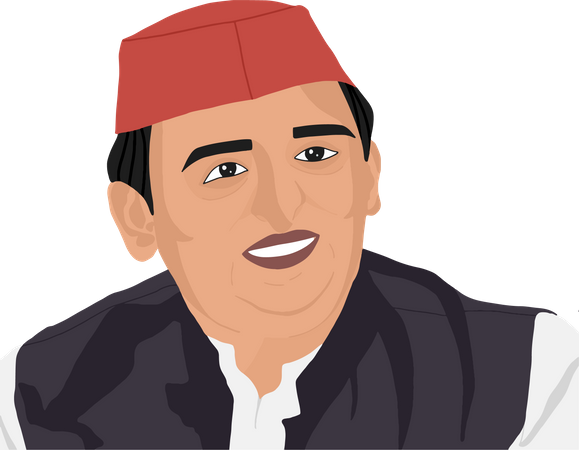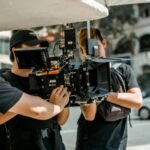Uttar Pradesh, often called UP, is one of India’s most politically significant states. With a population of over 200 million, it holds immense importance in shaping the country’s political landscape. This article delves into the political dynamics of Uttar Pradesh, exploring its historical context, major political parties, key leaders, recent elections, and the impact of politics on society and the economy.

Table of Contents
Overview of Uttar Pradesh
Uttar Pradesh, located in northern India, is the country’s largest state in population and area. It has a rich historical and cultural heritage, home to several ancient civilizations and empires. Today, UP plays a crucial role in the Indian political scenario, contributing to the formation of the central government.
Historical Political Landscape
Various movements and struggles mark the political history of Uttar Pradesh during the freedom movement against British rule. After India gained independence in 1947, the state witnessed the dominance of the Indian National Congress (INC). However, the political landscape has evolved over the years with the emergence of various regional parties.
1. Pre-Independence Era
During the pre-independence era, Uttar Pradesh, then known as the United Provinces of Agra and Oudh, played a pivotal role in India’s freedom struggle. Many prominent leaders emerged from this region, contributing to the national movement. The Indian National Congress (INC) was instrumental in mobilizing people against British rule, and Uttar Pradesh became a significant center for various protests and non-violent movements.
2. Post-Independence Period
After India gained independence in 1947, Uttar Pradesh continued to be a crucial political battleground. The state witnessed the dominance of the Indian National Congress, led by iconic figures like Pandit Jawaharlal Nehru and, later, his daughter, Indira Gandhi. The Congress’s political supremacy lasted for several decades and held the reins of power in both the state and the central government.
3. Emergence of Regional Parties
As India’s political landscape evolved, Uttar Pradesh witnessed the emergence of regional parties, challenging the Congress’s dominance. The 1960s saw the rise of socialist leaders like Ram Manohar Lohia and Chaudhary Charan Singh, who formed their own political outfits. These regional parties championed the cause of farmers and the marginalized, addressing issues specific to Uttar Pradesh’s social fabric.
4. Mandal Commission and Caste Politics
The late 1980s brought a significant shift in Uttar Pradesh’s political dynamics with the implementation of the Mandal Commission recommendations. The reservation system based on caste identity sparked a wave of caste-based politics in the state. This led to the rise of parties like the Samajwadi Party (SP) and the Bahujan Samaj Party (BSP), which gained support from different caste groups.
5. Coalition Politics and BJP’s Rise
The 1990s marked the era of coalition politics in Uttar Pradesh. Various parties formed alliances to gain an advantage in state elections. It was during this time that the Bharatiya Janata Party (BJP) also made its presence felt in the state. The party’s ideology, centered around Hindutva, appealed to a significant section of the population.
6. Twists and Turns in 21st Century
The 21st century witnessed several twists and turns in Uttar Pradesh’s political landscape. The state saw alternating governments led by different parties, reflecting the electorate’s diverse choices. The rise of prominent leaders like Mayawati, Mulayam Singh Yadav, and Yogi Adityanath further increased the state’s political complexity.
7. Influence on National Politics
Due to its large population and a significant number of seats in the Lok Sabha, Uttar Pradesh’s electoral outcome often plays a decisive role in shaping the central government. Political parties at the national level strategically align with regional parties in UP to gain a majority in the parliament.
8. Challenges and the Way Forward
Uttar Pradesh faces numerous challenges in its political landscape, including addressing social disparities, improving infrastructure, and maintaining law and order. As the state moves forward, balancing the aspirations of its diverse population and ensuring equitable development will be crucial.
Major Political Parties in Uttar Pradesh: A Look at the Power Players
Uttar Pradesh, being a political heavyweight in India, is home to several major political parties that vie for power and influence. These parties play a crucial role in shaping the state’s governance and have a significant impact on national politics as well. In this article, we explore the major political parties in Uttar Pradesh, their ideologies, and their contributions to the state’s political landscape.
1. Bharatiya Janata Party (BJP)
The Bharatiya Janata Party, or BJP, is a prominent right-wing political party in India. In Uttar Pradesh, the BJP has emerged as a dominant force in recent years. The party’s ideology revolves around Hindutva, emphasizing the preservation of Hindu culture and traditions. Led by charismatic leaders like Narendra Modi, the BJP has successfully garnered widespread support in the state.

The BJP’s focus on development and its proactive approach to governance have resonated with the people of Uttar Pradesh. The party has been instrumental in implementing various infrastructure projects and social welfare schemes, aiming to improve the lives of citizens.
2. Samajwadi Party (SP)
The Samajwadi Party, founded on socialist principles, is another major player in Uttar Pradesh’s political arena. Led by the Yadav family, with leaders like Mulayam Singh Yadav and his son Akhilesh Yadav, the SP has a significant support base among the backward classes and minorities.
The party’s agenda includes promoting social justice, rural development, and inclusive growth. During its rule, the Samajwadi Party has implemented various initiatives aimed at uplifting marginalized communities.
3. Bahujan Samaj Party (BSP)
The Bahujan Samaj Party, or BSP, is a party that primarily champions the cause of Dalits and other marginalized communities. Founded by the charismatic leader Kanshi Ram and later led by Mayawati, the BSP has consistently aimed to empower the oppressed and bring them into the political mainstream.

The party’s symbol, the elephant, has become synonymous with its identity. The BSP’s political strategy revolves around building a broad-based coalition of caste groups to secure electoral victories.
4. Indian National Congress (INC)
As one of the oldest political parties in India, the Indian National Congress has a significant presence in Uttar Pradesh as well. Historically, the INC played a crucial role in the freedom movement and post-independence politics.
While its prominence has diminished compared to the past, the Congress party still commands a dedicated voter base in certain regions. It remains an influential player, especially in alliance politics.
5. Other Regional Parties
Apart from the major national parties mentioned above, Uttar Pradesh is also home to various regional parties that hold sway in certain pockets. These parties often play the role of kingmakers in coalition governments and have a significant impact on electoral outcomes. Some of these regional parties include the Rashtriya Lok Dal (RLD), Apna Dal(S), and the Peace Party, among others.

Uttar Pradesh’s political landscape is shaped by a diverse array of parties, each with its own unique ideology and support base. The major political players in the state, such as the Bharatiya Janata Party, Samajwadi Party, Bahujan Samaj Party, and the Indian National Congress, compete vigorously for power and influence. As the state continues to evolve, the dynamics between these parties and their role in shaping governance will continue to be a focal point in Indian politics.
Key Political Leaders of Uttar Pradesh: Influential Figures Shaping the State’s Destiny
These leaders have shaped the state’s destiny through their ideologies, policies, and governance. In this article, we explore some of the key political leaders of Uttar Pradesh, highlighting their contributions and significance in the state’s political landscape.
1. Yogi Adityanath
Yogi Adityanath, born as Ajay Singh Bisht, is the current Chief Minister of Uttar Pradesh. He is a prominent leader of the Bharatiya Janata Party (BJP) and has been a Member of Parliament from Gorakhpur for several terms. Yogi Adityanath is known for his strong Hindu nationalist stance and is revered as the head priest of the Gorakhnath Math in Gorakhpur.

As Chief Minister, Yogi Adityanath has focused on various developmental initiatives and law and order reforms in the state. His leadership style and commitment to Hindutva have garnered both support and criticism, making him a polarizing figure in Uttar Pradesh politics.
2. Akhilesh Yadav
Akhilesh Yadav, the son of veteran politician Mulayam Singh Yadav, is a prominent leader of the Samajwadi Party (SP). He served as the Chief Minister of Uttar Pradesh from 2012 to 2017. Akhilesh Yadav is known for his youthful approach to politics and his efforts to modernize the party’s image.

During his tenure as Chief Minister, Akhilesh Yadav implemented various youth-centric policies, including the distribution of laptops to students and the establishment of expressways to boost connectivity. He remains a key leader in the state’s politics and continues to play an active role in the SP.
3. Mayawati
Mayawati, widely known as “Behenji,” is a prominent leader of the Bahujan Samaj Party (BSP). She has served as the Chief Minister of Uttar Pradesh multiple times and is a prominent advocate for the rights of Dalits and other marginalized communities.

Mayawati’s leadership has been instrumental in mobilizing a significant voter base from various castes. The BSP’s political strategy revolves around building a coalition of Dalits and other backward classes to secure electoral victories. She remains a powerful and influential figure in Uttar Pradesh politics.
4. Rahul Gandhi
Rahul Gandhi, a prominent leader of the Indian National Congress (INC), is a member of the Nehru-Gandhi family, which has a historic association with Indian politics. While Rahul Gandhi’s political career has seen ups and downs, he has been actively involved in various political campaigns and has held significant roles within the Congress party.

As a national leader, Rahul Gandhi also plays a role in influencing the party’s strategy and alliances in Uttar Pradesh, where the INC continues to strive for a prominent position.
The political landscape of Uttar Pradesh is enriched by the presence of these key leaders, each contributing in their unique ways to the state’s governance and development. Their ideologies, policies, and leadership styles have played a significant role in shaping Uttar Pradesh’s political destiny and influencing the broader national narrative. As the state’s politics continues to evolve, these leaders’ roles will remain central in determining its future direction.
Recent Elections and Results: A Closer Look at Uttar Pradesh’s Political Shifts

1. State Legislative Assembly Elections 2022
The most recent state legislative assembly elections in Uttar Pradesh were held in 2022. The contest was highly anticipated and closely fought, with major political parties vying for supremacy. The elections were a litmus test for the incumbent government led by Chief Minister Yogi Adityanath.
Key Highlights:
- Bharatiya Janata Party (BJP): The BJP campaigned extensively, emphasizing its development initiatives and law and order reforms. Chief Minister Yogi Adityanath was projected as the party’s face. The BJP sought to retain power and continue its governance.
- Samajwadi Party (SP): The Samajwadi Party, led by Akhilesh Yadav, emerged as the principal opposition to the BJP. The party highlighted issues such as unemployment and farmer welfare in its campaign.
- Bahujan Samaj Party (BSP): Mayawati’s BSP aimed to consolidate its support base among Dalits and other marginalized communities. The party contested independently and sought to challenge both the BJP and the SP.
- Indian National Congress (INC): The Congress party also contested independently and tried to revive its position in the state’s politics.
Election Outcome:
The 2022 state assembly elections saw a remarkable victory for the Bharatiya Janata Party. The party secured a decisive mandate, winning a clear majority of seats. Chief Minister Yogi Adityanath’s governance and development agenda resonated with the voters, leading to the BJP’s strong performance.
The Samajwadi Party, despite being the principal opposition, fell short of the majority mark. However, it remained a significant force with a substantial number of seats. The Bahujan Samaj Party and Indian National Congress faced electoral setbacks and were not able to make a considerable impact.
2. Lok Sabha Elections 2019
The 2019 Lok Sabha elections, which determine the composition of the Indian Parliament, were another crucial electoral event for Uttar Pradesh.
Key Highlights:
- BJP’s Alliance: In these elections, the BJP formed an alliance with smaller parties, including the Apna Dal and the Suheldev Bharatiya Samaj Party (SBSP). The alliance aimed to consolidate support and secure maximum seats.
- Mahagathbandhan: The Samajwadi Party, Bahujan Samaj Party, and the Rashtriya Lok Dal formed a “Mahagathbandhan” (grand alliance) to challenge the BJP’s dominance. This alliance was intended to combine caste-based support and counter the BJP’s Hindutva appeal.
Election Outcome:
The 2019 Lok Sabha elections witnessed a resounding victory for the BJP in Uttar Pradesh. The BJP and its alliance partners secured a significant majority of seats, winning 62 out of 80 seats in the state.
The Mahagathbandhan’s strategy did not yield the desired results, as it could only manage to win a limited number of seats. The BJP’s performance was attributed to its strong leadership, effective campaign, and the appeal of Prime Minister Narendra Modi.
Recent elections in Uttar Pradesh have showcased the state’s political dynamics and voter preferences. The 2022 state legislative assembly elections saw the BJP retaining power with a commanding majority, while the 2019 Lok Sabha elections demonstrated the party’s continued dominance at the national level. The political landscape in Uttar Pradesh remains dynamic, and future elections will undoubtedly shape the state’s trajectory and influence the national political narrative.
Political Issues and Challenges in Uttar Pradesh: Navigating the Complexities of Governance
Uttar Pradesh, being one of India’s most populous and politically significant states, faces a myriad of challenges and issues that impact its governance and development. As the heart of the nation’s political landscape, the state grapples with various complexities that require effective leadership and policy interventions. In this article, we delve into some of the key political issues and challenges faced by Uttar Pradesh.
1. Caste Politics
One of the most enduring challenges in Uttar Pradesh’s political landscape is the prevalence of caste-based politics. With a diverse population representing numerous castes and sub-castes, political parties often rely on caste identities to garner support during elections. This focus on caste affiliations can lead to polarization among different communities and hinder efforts for inclusive governance.
2. Law and Order
Maintaining law and order is a persistent concern for Uttar Pradesh. The state has witnessed instances of communal tension, communal riots, and crime in various forms. Ensuring a safe and secure environment for citizens is essential for fostering economic growth and social harmony.
3. Development Imbalance
Uttar Pradesh is geographically and economically diverse, with variations in development across regions. While some areas have seen significant progress in infrastructure and industrial growth, others continue to face underdevelopment and lack of basic amenities. Addressing this imbalance is crucial for equitable growth and reducing disparities.
4. Corruption
Corruption remains a longstanding issue in Uttar Pradesh’s political arena. Misuse of power and resources, lack of transparency, and inefficiencies in governance have hampered development efforts and eroded public trust. Combatting corruption is essential for ensuring good governance and effective service delivery.
5. Education and Healthcare
Uttar Pradesh faces challenges in providing quality education and healthcare services to its vast population. Access to education and healthcare facilities is uneven, particularly in rural and marginalized communities. Strengthening these sectors is vital for human capital development and improving the overall well-being of the population.
6. Unemployment and Job Creation
Unemployment is a significant concern in Uttar Pradesh, especially among the youth. The state needs to focus on creating employment opportunities and fostering an environment conducive to entrepreneurship and skill development.
7. Environmental Degradation
Rapid urbanization and industrialization have put immense pressure on the environment in Uttar Pradesh. Issues such as air and water pollution, deforestation, and improper waste management need urgent attention to ensure sustainable development.
8. Farmer Distress
Agriculture is a crucial sector in Uttar Pradesh, employing a substantial portion of the population. However, farmers often face challenges like low productivity, inadequate market linkages, and indebtedness. Addressing farmer distress and providing better support for agricultural development are vital for rural prosperity.
9. Women’s Safety and Empowerment
Ensuring women’s safety and empowerment is essential for social progress. Uttar Pradesh faces challenges related to gender-based violence and discrimination. Implementing effective policies and strengthening law enforcement mechanisms can create a safer environment for women and promote their active participation in society.
10. Infrastructure Development
While there have been notable infrastructure projects in the state, there is still a need for significant investment in areas such as transportation, electricity, and water supply. Robust infrastructure is crucial for economic growth and improving the quality of life for citizens.
Uttar Pradesh’s political landscape is marked by a host of challenges that require careful navigation and strategic policymaking. Addressing issues like caste politics, law and order, development imbalance, corruption, and environmental degradation is critical for the state’s progress and prosperity. By focusing on inclusive governance, economic development, and social welfare, Uttar Pradesh can overcome its challenges and emerge as a stronger and more vibrant state on the Indian political map.
Created with AIPRM Prompt “Human Written |100% Unique |SEO Optimized Article”
Political Impact on Society and Economy: The Interplay of Governance in Uttar Pradesh
Politics and governance in Uttar Pradesh have a profound impact on society and the economy of the state. As one of India’s largest and most populous states, the political decisions and policies implemented here influence the lives of millions of citizens and shape the overall economic landscape. In this article, we explore the political impact on society and the economy in Uttar Pradesh.
1. Social Welfare Schemes
Political decisions play a significant role in the implementation of social welfare schemes in Uttar Pradesh. Governments often introduce various programs to address issues related to poverty, education, healthcare, and women’s empowerment. These welfare schemes aim to uplift marginalized sections of society and provide them with better opportunities and support. The effectiveness of these initiatives can determine the state’s progress towards social development.
2. Industrial Development
Political stability and proactive governance can attract investments and foster industrial development in Uttar Pradesh. Policies that promote ease of doing business, infrastructure development, and incentives for industries can create a favorable environment for businesses to thrive. A robust industrial sector contributes to job creation, economic growth, and revenue generation for the state.
3. Infrastructure Projects
The government’s focus on infrastructure development is crucial for enhancing connectivity and improving the quality of life for residents. Investments in roads, bridges, transportation, and utilities not only create jobs during construction but also lay the foundation for long-term economic growth. Improved infrastructure facilitates the movement of goods and people, spurring economic activity across the state.
4. Education and Skill Development
Political decisions impact the education sector by influencing funding for schools, colleges, and skill development programs. Investments in education are essential for nurturing human capital, fostering innovation, and building a skilled workforce. An educated and skilled population contributes to the state’s economic productivity and competitiveness on the national and global stage.
5. Healthcare Services
The state’s healthcare system is significantly influenced by political decisions related to funding, infrastructure, and healthcare policies. Adequate investment in healthcare facilities and initiatives targeting public health issues can lead to better health outcomes for the population. Improved healthcare services contribute to a healthier and more productive workforce.
6. Environment and Sustainability
Political policies related to the environment and sustainability impact the state’s natural resources, ecological balance, and climate change resilience. Proactive measures to address environmental challenges, such as pollution control and conservation of forests and water bodies, are vital for ensuring a sustainable and healthy environment for future generations.
7. Social Harmony and Inclusivity
Political leaders’ commitment to promoting social harmony and inclusivity plays a critical role in maintaining peace and fostering a sense of unity among diverse communities. Political decisions that aim to bridge the gaps between different caste, religious, and linguistic groups contribute to a cohesive and harmonious society.
8. Women’s Empowerment and Safety
Political initiatives and policies addressing women’s safety, education, and economic empowerment have a significant impact on gender equality and women’s status in society. Creating an environment that fosters women’s participation in various spheres of life is essential for a balanced and progressive society.
9. Employment Generation
Government policies that promote economic growth, entrepreneurship, and skill development contribute to employment generation in the state. A strong focus on job creation helps tackle the issue of unemployment, especially among the youth.
10. Public Trust and Governance
Political decisions and governance practices that prioritize transparency, accountability, and efficient public service delivery build public trust in the government. Trustworthy governance fosters citizen engagement and ensures better implementation of policies and programs.
11. Poverty Alleviation
Uttar Pradesh, like many other states in India, grapples with the issue of poverty. Political decisions and policies aimed at poverty alleviation can have a significant impact on vulnerable sections of society. Targeted welfare programs, access to basic amenities, and skill development initiatives can uplift those living in poverty, improving their quality of life and providing them with opportunities to break free from the cycle of deprivation.
12. Agricultural Reforms
Agriculture is the backbone of Uttar Pradesh’s economy, providing employment to a large portion of the population. Political measures that focus on agricultural reforms, such as modernizing farming practices, providing better irrigation facilities, and ensuring fair prices for agricultural produce, are crucial for the well-being of farmers. Strengthening the agricultural sector can boost rural income and contribute to overall economic growth.
13. Population Growth and Family Planning
Uttar Pradesh faces the challenge of rapid population growth, which puts immense pressure on resources and infrastructure. Political efforts towards promoting family planning and population control can have long-term implications on the state’s development and sustainability.
14. Urbanization and Slum Development
As urbanization accelerates, there is a need for well-planned urban development to accommodate the growing population. Addressing issues related to slum development, urban infrastructure, and affordable housing can improve the living conditions of urban dwellers and foster sustainable urban growth.
15. Disaster Management
Uttar Pradesh is prone to natural disasters like floods and cyclones. Effective disaster management policies and preparedness are critical for mitigating the impact of such calamities and ensuring the safety of citizens.
16. Inter-State Relations
Uttar Pradesh shares borders with several neighboring states, and harmonious inter-state relations are vital for regional development and cooperation. Political leaders need to engage in effective diplomacy and collaborative efforts to address cross-border issues and promote interstate trade and development.
17. Attracting Investments
Political stability and investor-friendly policies are key factors in attracting domestic and foreign investments. A conducive business environment can stimulate economic growth and create job opportunities for the state’s youth.
18. Digital Governance
Harnessing technology for governance can enhance service delivery, transparency, and efficiency. Digital initiatives in areas like e-governance, online education, and digital healthcare can revolutionize public services and bring about positive changes in society.
19. Climate Change Adaptation
Climate change poses significant challenges for Uttar Pradesh, impacting agriculture, water resources, and overall ecosystem health. Political leaders need to prioritize climate change adaptation and resilience-building strategies to protect the state from its adverse effects.
20. Inclusive Economic Growth
Ensuring that economic growth benefits all sections of society is crucial for social harmony and stability. Policies that promote inclusive economic growth and reduce income disparities can uplift marginalized communities and create a more equitable society.
The interplay of politics and governance in Uttar Pradesh has far-reaching implications on society and the economy. Addressing these challenges requires a comprehensive and collaborative approach from political leaders, policymakers, and citizens. By prioritizing social welfare, economic development, sustainability, and inclusivity, Uttar Pradesh can pave the way for a brighter and more prosperous future for its people. As politics continues to shape the state’s destiny, the importance of responsible and visionary leadership cannot be overstated in building a vibrant and resilient Uttar Pradesh.
Future Prospects and Predictions: Charting the Path of Uttar Pradesh’s Political Landscape
As Uttar Pradesh continues to be a significant player in Indian politics, its future prospects hold immense importance not just for the state but also for the entire nation. The interplay of political decisions, societal changes, and economic developments will shape the trajectory of Uttar Pradesh’s political landscape. While making predictions about the future is always subject to uncertainties, several factors can be considered while exploring the state’s future prospects.
1. Political Stability and Leadership
The political stability of the state government will play a pivotal role in determining its future direction. A strong and stable leadership with a clear vision and effective governance can pave the way for progress and development. Political shifts or coalition governments may lead to policy uncertainties and impact the implementation of long-term projects.
2. Electoral Trends
Uttar Pradesh’s electoral landscape is dynamic, and electoral trends can change with each election. Factors like the performance of political parties, voter sentiment, and regional alliances will influence election outcomes. The ability of political parties to adapt to changing voter preferences and demographics will determine their electoral success.
3. Youth Participation and Aspirations
The youth of Uttar Pradesh represent a significant portion of the electorate. Their aspirations, concerns, and political participation will have a substantial impact on the state’s politics. Political parties that engage with the youth and address their needs are likely to gain support in the coming years.
4. Regional and Caste Dynamics
Caste-based politics has been a defining characteristic of Uttar Pradesh’s political landscape. The influence of caste dynamics on elections and governance will continue to be a significant factor. Political parties that can strike a balance between catering to specific caste interests while promoting inclusivity may garner broader support.
5. Economic Development and Industrial Growth
The state’s economic development and industrial growth will influence its political landscape. Sustained efforts towards attracting investments, fostering entrepreneurship, and creating job opportunities will shape the socio-economic aspirations of the people and impact their political choices.
6. Infrastructural Advancements
Improvements in infrastructure, such as better transportation, connectivity, and urban facilities, will be crucial for the state’s development. Successful implementation of infrastructure projects can enhance the quality of life for citizens and contribute to economic growth.
7. Environmental Sustainability
Environmental concerns are gaining prominence globally, and Uttar Pradesh’s political leaders will need to address these challenges proactively. Policies that promote sustainability, conservation of resources, and climate change adaptation will become increasingly important.
8. Technological Advancements
The integration of technology into governance can revolutionize public services and citizen engagement. Technological advancements can enhance transparency, efficiency, and accessibility in government processes, influencing public perception of the administration.
9. Social Welfare and Inclusivity
The effectiveness of social welfare schemes and initiatives aimed at inclusivity will be critical for uplifting marginalized communities and fostering social harmony. Political leaders’ commitment to social welfare will significantly impact the state’s human development indicators.
10. Global and National Context
Uttar Pradesh’s political landscape cannot be viewed in isolation from the global and national context. International relations, economic trends, and geopolitical developments will also have indirect influences on the state’s politics and governance.
Conclusion
Predicting the future of Uttar Pradesh’s political landscape involves considering multiple interrelated factors and uncertainties. As the state moves forward, responsible leadership, visionary policies, and inclusive governance will be essential for addressing challenges and harnessing opportunities. The dynamic nature of politics makes it challenging to foresee exact outcomes, but by focusing on sustainable development, social welfare, economic growth, and inclusive governance, Uttar Pradesh can chart a course towards a more prosperous and harmonious future.
FAQs
How does caste politics influence elections in Uttar Pradesh?
Caste politics plays a significant role in influencing voter behavior in UP. Political parties often align their strategies and candidate selection based on caste equations to gain support from specific communities.
Who are the foremost national political leaders with influence in UP?
Leaders like Narendra Modi, Amit Shah, and Priyanka Gandhi are prominent national figures who influence Uttar Pradesh politics.
What is the significance of UP in the formation of the central government?
With many seats in the Lok Sabha, UP’s electoral outcome can significantly impact the formation of the central government.
How does infrastructure development impact Uttar Pradesh’s economy?
Infrastructure development contributes to economic growth by attracting investments, creating jobs, and improving overall connectivity within the state.
What are the main factors contributing to UP’s population’s voting patterns?
Factors such as religion, caste, development initiatives, and governance performance influence the voting patterns of UP’s population.








